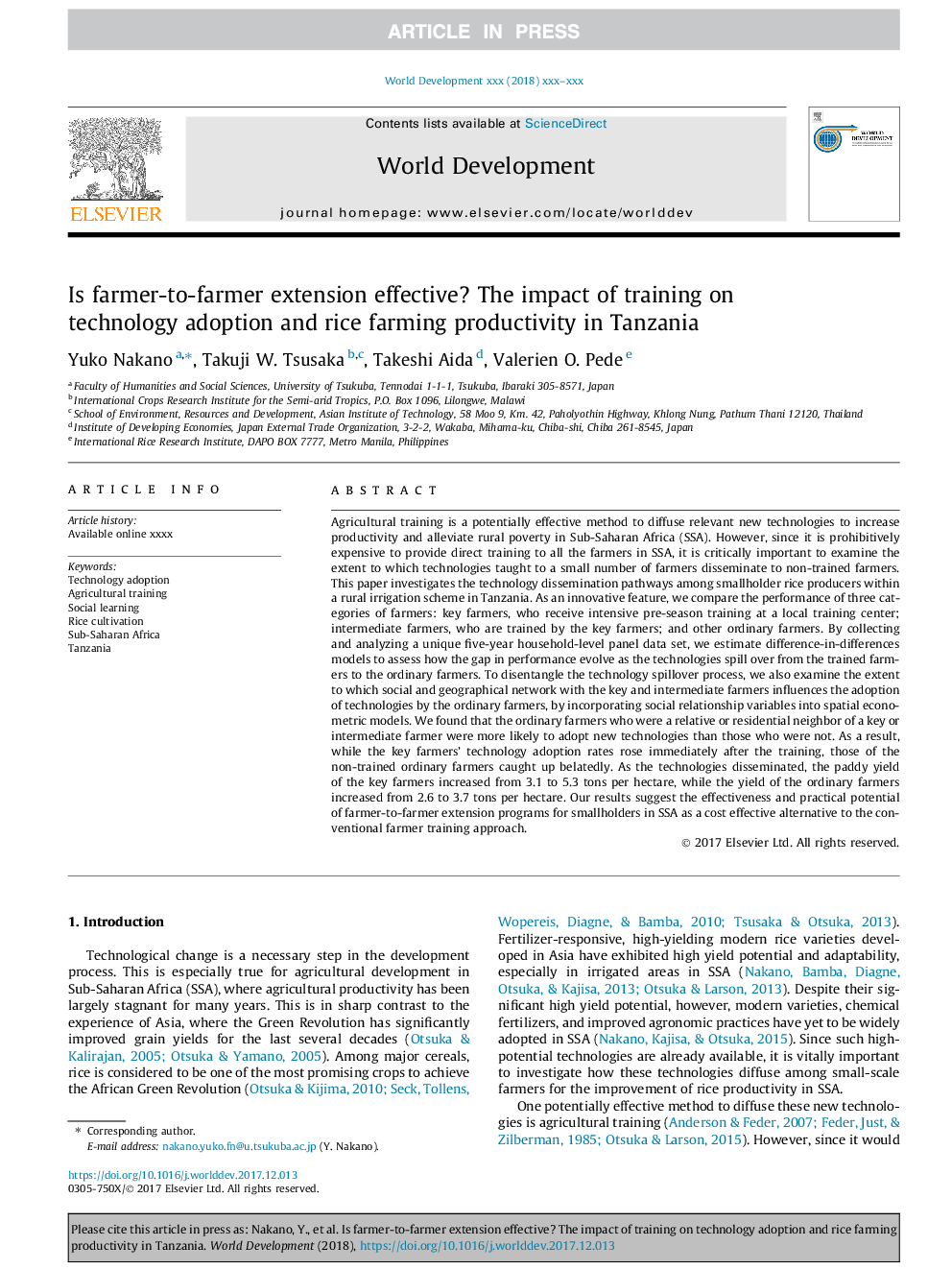| کد مقاله | کد نشریه | سال انتشار | مقاله انگلیسی | نسخه تمام متن |
|---|---|---|---|---|
| 7391978 | 1481113 | 2018 | 16 صفحه PDF | دانلود رایگان |
عنوان انگلیسی مقاله ISI
Is farmer-to-farmer extension effective? The impact of training on technology adoption and rice farming productivity in Tanzania
ترجمه فارسی عنوان
آیا توسعه مزرعه به کشاورز موثر است؟ تأثیر آموزش در زمینه پذیرش تکنولوژی و بهره وری کشاورزی برنج در تانزانیا
دانلود مقاله + سفارش ترجمه
دانلود مقاله ISI انگلیسی
رایگان برای ایرانیان
کلمات کلیدی
پذیرش فناوری، آموزش کشاورزی، یادگیری اجتماعی، کشت برنج، جنوب صحرای آفریقا، تانزانیا،
موضوعات مرتبط
علوم انسانی و اجتماعی
اقتصاد، اقتصادسنجی و امور مالی
اقتصاد و اقتصادسنجی
چکیده انگلیسی
Agricultural training is a potentially effective method to diffuse relevant new technologies to increase productivity and alleviate rural poverty in Sub-Saharan Africa (SSA). However, since it is prohibitively expensive to provide direct training to all the farmers in SSA, it is critically important to examine the extent to which technologies taught to a small number of farmers disseminate to non-trained farmers. This paper investigates the technology dissemination pathways among smallholder rice producers within a rural irrigation scheme in Tanzania. As an innovative feature, we compare the performance of three categories of farmers: key farmers, who receive intensive pre-season training at a local training center; intermediate farmers, who are trained by the key farmers; and other ordinary farmers. By collecting and analyzing a unique five-year household-level panel data set, we estimate difference-in-differences models to assess how the gap in performance evolve as the technologies spill over from the trained farmers to the ordinary farmers. To disentangle the technology spillover process, we also examine the extent to which social and geographical network with the key and intermediate farmers influences the adoption of technologies by the ordinary farmers, by incorporating social relationship variables into spatial econometric models. We found that the ordinary farmers who were a relative or residential neighbor of a key or intermediate farmer were more likely to adopt new technologies than those who were not. As a result, while the key farmers' technology adoption rates rose immediately after the training, those of the non-trained ordinary farmers caught up belatedly. As the technologies disseminated, the paddy yield of the key farmers increased from 3.1 to 5.3 tons per hectare, while the yield of the ordinary farmers increased from 2.6 to 3.7 tons per hectare. Our results suggest the effectiveness and practical potential of farmer-to-farmer extension programs for smallholders in SSA as a cost effective alternative to the conventional farmer training approach.
ناشر
Database: Elsevier - ScienceDirect (ساینس دایرکت)
Journal: World Development - Volume 105, May 2018, Pages 336-351
Journal: World Development - Volume 105, May 2018, Pages 336-351
نویسندگان
Yuko Nakano, Takuji W. Tsusaka, Takeshi Aida, Valerien O. Pede,
